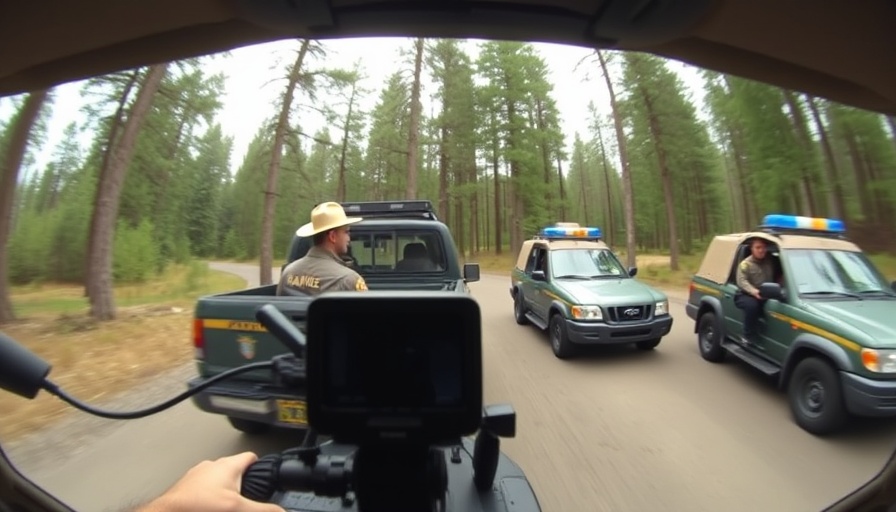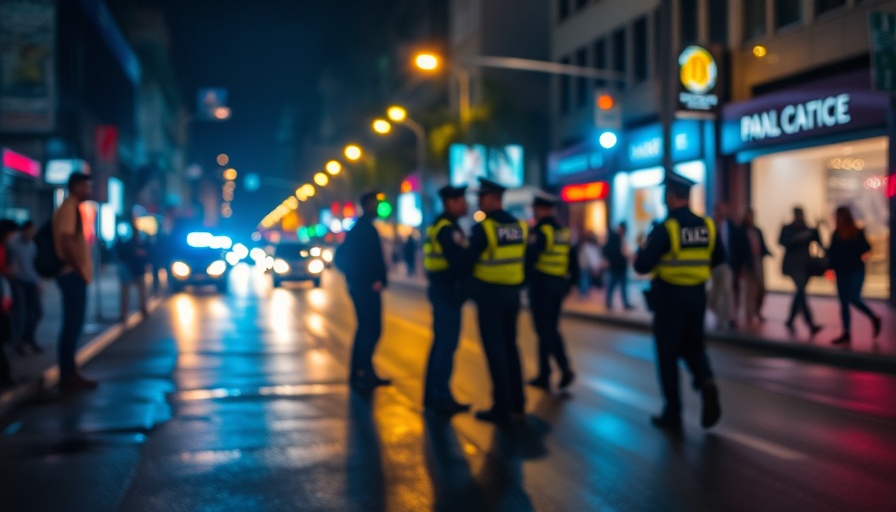
Tracing the Events Leading to the Fatal Shooting Incident
In early March, a tragic incident unfolded in Puna, Hawaii that has left local law enforcement and the community in shock. Newly released body camera footage from the National Park Service (NPS) captures the harrowing final moments of a manhunt for a suspect accused of fatally shooting his ex-girlfriend’s sister. This incident, which culminated in a fatal officer-involved shooting (OIS), raises critical questions regarding how law enforcement handles armed suspects and the evolving role of technology in such operations.
The Body Camera's Role in Enhancing Transparency
The release of body camera footage not only serves as a vital tool for transparency but also showcases the significant advancements in police technology.
The footage began as officers located a man in a white pickup truck near rental cabins at Hawaii Volcanoes National Park. The situation quickly escalated when the suspect fled into wooded terrain after a brief standoff. Officers pleaded for the suspect to surrender peacefully, demonstrating the humane approach typically advocated in police training programs. Body cameras have become essential in such scenarios, capturing real-time interactions that provide insight into the decision-making processes of law enforcement during high-stakes situations.
Analysis of Officer Decision-Making in High-Stress Situations
In the footage, two police officers can be heard urging the suspect to surrender, prioritizing dialogue over force. One officer explicitly states, “We’re just trying to get you out of here. I don’t want to shoot you.” This reflects a broader discussion about police use of force policies and the critical importance of de-escalation strategies in law enforcement training. The challenge lies in balancing officer safety and public safety amidst the escalating tensions that can arise during such encounters.
The Incident's Impact on Law Enforcement Policies
The tragic outcome of this incident necessitates a reflection on law enforcement policies surrounding use of force and officer mental health. The suspect’s refusal to surrender and eventual fatal shooting underscore the challenges officers face while ensuring their safety and adhering to policy protocols. In light of similar events that have sparked debates on police brutality and accountability, departments may be compelled to reconsider their training practices and the mental health resources available for officers navigating traumatic experiences.
New Perspectives on Officer Wellness and Mental Health
Moreover, the psychological toll of such encounters on officers cannot be overstated. Ensuring that police officers are equipped with effective stress management tools and mental health support systems is vital for their well-being and overall community relations. The conversation surrounding officer wellness is becoming increasingly relevant as incidents involving police use of force spark public scrutiny.
Community Response and Dialogue
This incident opens opportunities for dialogue between law enforcement and community members. Community engagement initiatives focusing on policing strategies, accountability, and transparency are essential to fostering trust between police departments and the public they serve. As stakeholders in public safety, it is imperative to bridge gaps in understanding and actively seek collaboration that prioritizes community needs.
Future Implications for Law Enforcement Training
As we look toward the future, law enforcement agencies may benefit from evolving their training programs to encompass technology integration and mental health frameworks. Adopting comprehensive training strategies that emphasize both technical skills and emotional intelligence can improve officer responses to high-pressure situations. This proactive approach could serve as a model for other departments facing similar challenges.
In conclusion, the tragic shooting underscores the urgent need for continued dialogue on police accountability and the role of technology in modern policing. Moving forward, law enforcement agencies must embrace opportunities to foster community trust while ensuring the safety and well-being of their officers.
 Add Row
Add Row  Add
Add 

 Add Element
Add Element 




Write A Comment